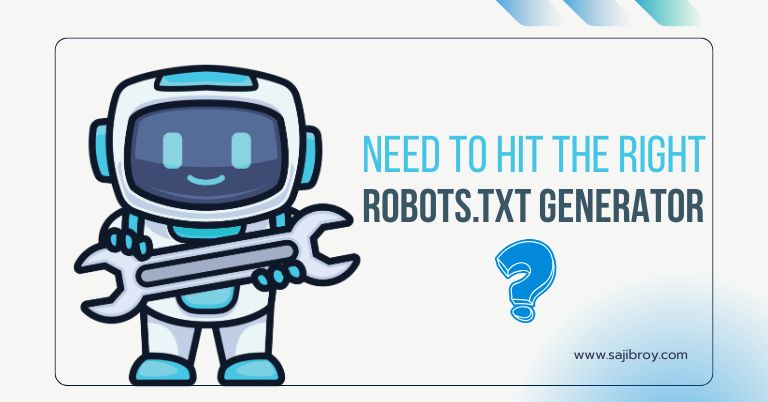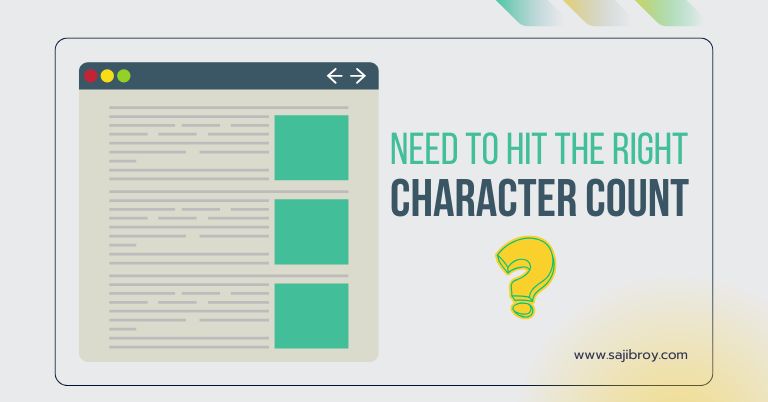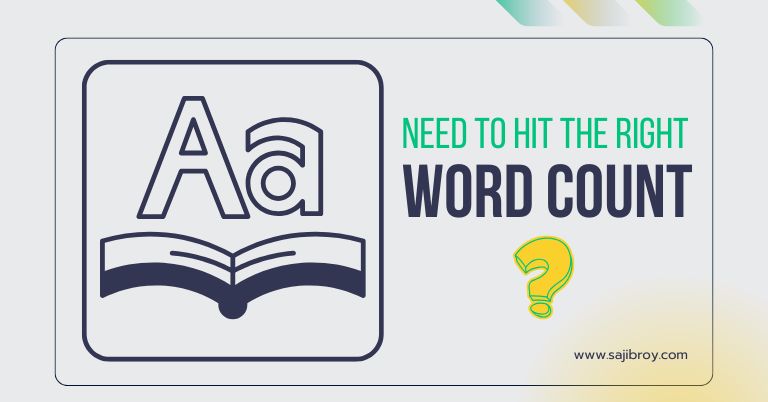Improving advertising performance is a continuous challenge for marketers. One way to tackle this challenge is through automated bidding, a powerful tool that can help advertisers improve their campaigns’ efficiency and effectiveness. In this article, I’ll explore the ways that automated bidding can help an advertiser improve their advertising performance.
RELATED TOPIC:
- How Can Google Ads Help You Advance Your Business Goals?
- How can Performance Planner Serve Your Business?
- What can the Performance Planner Recommend?
- How Does Google Ads Generate Responsive Search Ads?
- How can Ad Extensions Contribute to Increasing User Engagement?
- How do Responsive Display Ads use Automation?
Let's See the Topic Overview
What is Automated Bidding?
Automated bidding can be the secret weapon for advertisers that can improve their targeting precision, ad performance, and overall return on investment by leveraging the power of machine learning and data-driven insights.
Automated bidding is a feature offered by advertising platforms that allows advertisers to set their advertising budget and let the platform automatically bid on ad space. Automated bidding algorithms consider various factors such as the advertiser’s budget, goals, and target audience to determine the optimal bid amount for each ad placement.
How Does Automated Bidding Work?
Before diving into the benefits of automated bidding, it’s important to understand how it actually works. There are several different types of automated bidding strategies, including:
- Target CPA (cost per acquisition)
- Target ROAS (return on ad spend)
- Enhanced CPC (cost per click)
- Maximize clicks
- Maximize conversions
Each of these strategies has its own set of rules and parameters that determine how bids are placed, and which ad opportunities are selected.
In addition to the bidding strategy itself, there are several other factors that can influence automated bidding, such as:
- The target audience you’re trying to reach
- The type of ad you’re running (text, display, video, etc.)
- The ad placement (search results, social media feeds, etc.)
- The budget you have available for bidding
To make the most of automated bidding, it’s important to have a clear understanding of how these factors interact with one another, and how they can be optimized to achieve your desired results.
Automated bidding uses algorithms and machine learning to optimize bids for online advertising campaigns. Here are the basic steps of how automated bidding works:
- Collecting data: The algorithm collects data from the advertiser’s previous ad campaigns, including click-through rates (CTR), conversion rates, and other metrics.
- Analyzing data: The algorithm analyzes the data to identify patterns and trends in user behavior. It also looks at external factors such as the time of day, device, and location.
- Setting bids: Based on the analysis, the algorithm sets bids for each ad placement to maximize the advertiser’s goals. For example, the algorithm may set higher bids for ad placements that are more likely to result in conversions.
- Adjusting bids: As the campaign runs, the algorithm continues to collect and analyze data and adjusts bids in real-time based on user behavior and campaign performance. This allows the algorithm to optimize bids for maximum performance.
- Monitoring results: The algorithm monitors campaign performance and adjusts bids as necessary to ensure that the campaign stays within the advertiser’s budget and meets its goals.
Overall, automated bidding can help advertisers optimize their ad campaigns by taking into account real-time data and user behavior to adjust bids for maximum performance.
Benefits of Automated Bidding
Automated bidding provides many benefits to advertisers looking to improve their advertising performance. Some of the key benefits of automated bidding include:
1. Increased Efficiency
Automated bidding saves time by eliminating the need for manual bidding. Instead of manually setting bids for each ad placement, advertisers can set their budget and let the platform’s algorithms do the work.
2. Improved Accuracy
Automated bidding algorithms are designed to optimize bids based on the advertiser’s goals, target audience, and historical performance data. This means that bids are more accurate and targeted, resulting in a higher likelihood of conversions and a better return on investment (ROI).
3. Real-Time Adjustments
Automated bidding algorithms make real-time adjustments to bids based on changes in ad performance or other external factors. This allows advertisers to quickly adapt to changes in the market and stay ahead of their competition.
4. Enhanced Targeting
Automated bidding algorithms take into account various factors such as location, time of day, and device type to ensure that ads are served to the right audience at the right time. This enhances targeting, resulting in a higher likelihood of conversions and a better ROI.
5. Allows for Greater Targeting and Personalization
Another advantage of automated bidding is that it can help you target your advertising more effectively, based on factors such as location, device type, and other key demographic information. This can help ensure that your ads are being shown to the people most likely to be interested in your products or services.
How Automated Bidding Helps Improve Advertising Performance?
Now that we’ve explored the benefits of automated bidding, let’s dive into the ways that it can help improve an advertiser’s advertising performance.
1. Increased Conversion Rates
Automated bidding algorithms are designed to optimize bids based on the advertiser’s goals, target audience, and historical performance data. This means that bids are more accurate and targeted, resulting in a higher likelihood of conversions. By increasing conversion rates, advertisers can generate more leads or sales from their advertising campaigns.
2. Improved Cost Efficiency
Automated bidding algorithms are designed to maximize ROI by ensuring that bids are optimized based on the advertiser’s budget and goals. This means that advertisers can achieve their desired outcomes while minimizing costs. By improving cost efficiency, advertisers can generate more leads or sales from their advertising campaigns without overspending.
3. Enhanced Campaign Performance
Automated bidding algorithms make real-time adjustments to bids based on changes in ad performance or other external factors. This means that advertisers can quickly adapt to changes in the market and stay ahead of their competition. By enhancing campaign performance, advertisers can generate more leads or sales from their advertising campaigns while maintaining a competitive edge.
Real-Life Example On: What can Automated Bidding Help an Advertiser Improve?
Let’s say an online clothing retailer is running a PPC campaign to promote their spring collection. They have set a target cost-per-click (CPC) and a daily budget. However, manual bidding can be time-consuming and ineffective as user behavior can change quickly.
By using automated bidding, the advertiser can adjust their bids in real time based on factors such as device, location, time of day, and user behavior. The algorithm can analyze data from previous clicks and conversions and adjust bids to maximize conversions while staying within the daily budget.
Furthermore, automated bidding can help the advertiser identify the most effective keywords and ad placements, as well as adjust bidding strategies based on the value of each conversion. This can lead to higher click-through rates (CTR), lower cost-per-acquisition (CPA), and ultimately, a higher return on investment (ROI).
Overall, automated bidding can help an advertiser improve their campaign performance by taking the guesswork out of the bidding and allowing them to optimize their ad spending in real-time based on user behavior and campaign data.
Which Tool Should Be Used for Google Ads Performance Tracking?
Google Ads provides several tools for performance tracking, but one of the most widely used and recommended tools is Google Analytics.
Google Analytics is a free web analytics service that tracks and reports website traffic and user behavior. By linking your Google Ads and Google Analytics accounts, you can get deeper insights into the performance of your Google Ads campaigns, including information on user behavior, demographics, and conversion tracking.
In Google Analytics, you can set up custom reports and dashboards to track the metrics that are most important to your business, such as clicks, impressions, conversions, and revenue. You can also use the data to optimize your campaigns by identifying areas of low performance and making changes to your ad creative, targeting, and bidding strategies.
Other tools that can be useful for Google Ads performance tracking include Google Ads reporting and conversion tracking, as well as third-party tools such as SEMrush, Ahrefs, and Moz. However, Google Analytics is often the go-to choice for advertisers due to its robust tracking capabilities, integration with Google Ads, and user-friendly interface.
In summary, if you’re looking for a tool to track and optimize the performance of your Google Ads campaigns, Google Analytics is a great option to consider. By linking your Google Ads and Google Analytics accounts, you can gain valuable insights into user behavior and campaign performance, and use this data to improve the effectiveness of your campaigns.
Challenges and Considerations
While there are many benefits to using automated bidding in your digital marketing efforts, it’s important to keep in mind that there are also some potential risks and downsides to being aware of. For example, automated bidding may not always be the best choice for businesses with highly complex or customized advertising campaigns.
Other potential challenges to consider include the fact that automated bidding may not always be able to account for external factors that can impact your advertising performance, such as changes in the competitive landscape or shifts in consumer behavior.
Despite these challenges, there are several best practices and tips that businesses can follow to maximize the benefits of automated bidding. For example:
- Regularly monitor and analyze your advertising performance to ensure that your bidding strategies are working as intended
- Consider using a mix of automated and manual bidding to optimize your advertising performance
- Test different bidding strategies and parameters to find what works best for your business and target audience
- Keep up-to-date with the latest trends and changes in the digital advertising landscape to ensure that your strategies remain effective over time.
Final Thoughts on Automated Bidding
Automated bidding is a powerful tool that can help advertisers improve their advertising performance by increasing efficiency, accuracy, and targeting. By leveraging the benefits of automated bidding, advertisers can increase conversion rates, improve cost efficiency, and enhance campaign performance. If you’re looking to improve your advertising performance, automated bidding is a tool worth exploring.
FAQs
- 1. Why Would You Choose Automated Bidding Instead of Manual Bidding?
Automated bidding can be beneficial for advertisers who want to optimize their ad performance but don’t have the time or resources to monitor and adjust bids manually constantly. With automated bidding, the bidding process is automated using machine learning algorithms that consider various factors, such as historical performance data, user behavior, and conversion rates. This can lead to more efficient bidding, increased return on investment (ROI), and better overall ad performance.
- 2. What Can the Performance Planner Assist You With?
The performance planner is a tool within Google Ads that help advertisers plan their ad spend and forecast the potential results of their campaigns. By entering a budget and target metrics such as clicks, conversions, or ROAS (return on ad spend), the performance planner can provide recommendations on how to allocate your budget across campaigns and ad groups to maximize performance. It can also forecast the potential results of different budget scenarios, allowing advertisers to make more informed decisions about their ad spend.
- 3. What’s a Key Benefit of Responsive Display Ads?
One key benefit of responsive display ads is that they automatically adjust to fit the ad space on the websites where they are displayed. This means that advertisers don’t need to create multiple ad sizes and formats for different websites and devices, which can save time and resources. Additionally, responsive display ads can use machine learning to optimize ad creative and placement, leading to better ad performance and higher click-through rates.
- 4. When Should You Use Responsive Display Ads?
Responsive display ads can be a good choice for advertisers who want to reach a broad audience across a variety of websites and devices. They are particularly useful for advertisers who don’t have the time or resources to create multiple ad formats for different websites and devices. Responsive display ads can also be beneficial for retargeting campaigns, as they can use machine learning to optimize ad creative and placement based on user behavior and engagement. However, it’s important to note that responsive display ads may not be the best choice for all campaigns and that other ad formats, such as search ads or video ads, may be more appropriate depending on campaign goals and target audience.
- 5. Can I still control my ad campaign with automated bidding?
Yes, you can still control your ad campaign with automated bidding. You can set a target cost-per-click (CPC) and a daily budget and the algorithm will adjust bids based on those parameters. You can also adjust bidding strategies and campaign settings as needed.
- 6. How does automated bidding differ from manual bidding?
Automated bidding uses software or algorithms to automatically bid on advertising opportunities, while manual bidding involves setting bids manually. Automated bidding can be more efficient and effective, but may not always be the best choice for highly customized advertising campaigns.
- 7. What types of automated bidding strategies are available?
There are several different types of automated bidding strategies, including Target CPA, Target ROAS, Enhanced CPC, Maximize Clicks, and Maximize Conversions. Each strategy has its own set of rules and parameters that determine how bids are placed.
- 8. How can businesses optimize their use of automated bidding?
To optimize the use of automated bidding, businesses should regularly monitor and analyze advertising performance, test different strategies and parameters, and stay up-to-date with the latest trends and changes in the digital advertising landscape.
- 9. What are some potential downsides to using automated bidding?
Potential downsides to using automated bidding include the fact that it may not always be able to account for external factors that can impact advertising performance, and that it may not be the best choice for highly complex or customized advertising campaigns.
- 10. What is the future of automated bidding in digital marketing?
As digital marketing continues to evolve, it’s likely that automated bidding will play an increasingly important role in helping businesses reach their target audience and achieve their advertising goals. However, it’s important for businesses to stay informed and adaptable to ensure that they can continue to make the most of this valuable tool over time.
Keep Learning With Sajib Roy












